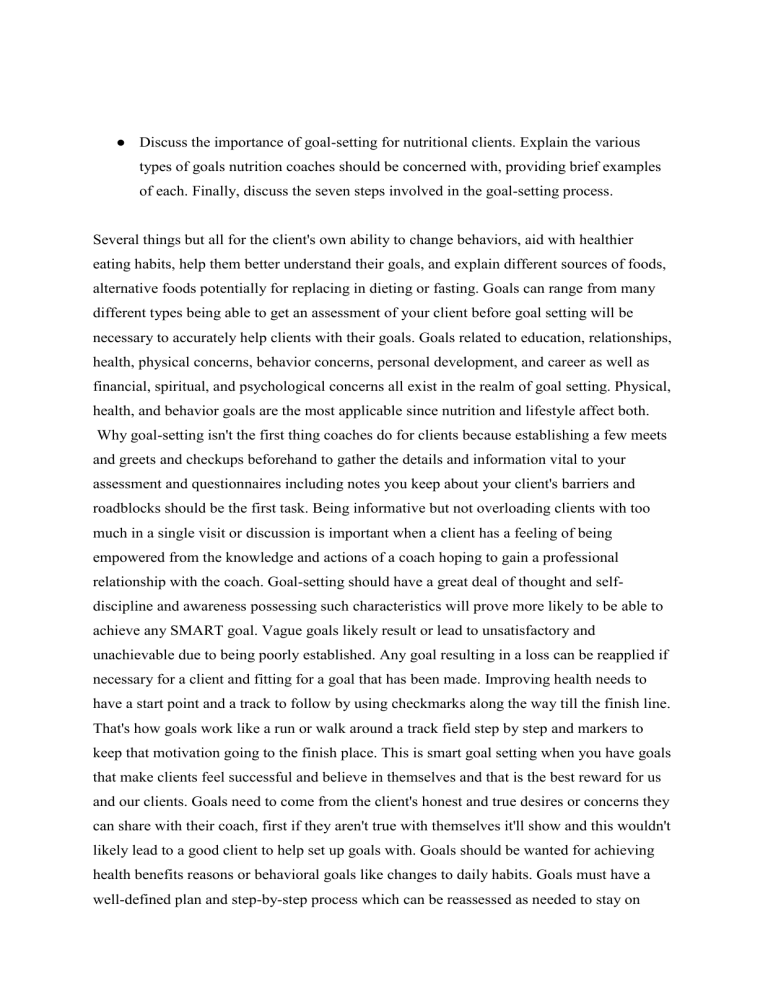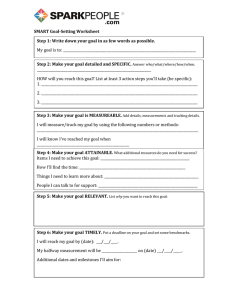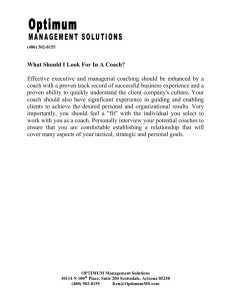Final quiz questions for nutrition certification 220810 095657
advertisement

● Discuss the importance of goal-setting for nutritional clients. Explain the various types of goals nutrition coaches should be concerned with, providing brief examples of each. Finally, discuss the seven steps involved in the goal-setting process. Several things but all for the client's own ability to change behaviors, aid with healthier eating habits, help them better understand their goals, and explain different sources of foods, alternative foods potentially for replacing in dieting or fasting. Goals can range from many different types being able to get an assessment of your client before goal setting will be necessary to accurately help clients with their goals. Goals related to education, relationships, health, physical concerns, behavior concerns, personal development, and career as well as financial, spiritual, and psychological concerns all exist in the realm of goal setting. Physical, health, and behavior goals are the most applicable since nutrition and lifestyle affect both. Why goal-setting isn't the first thing coaches do for clients because establishing a few meets and greets and checkups beforehand to gather the details and information vital to your assessment and questionnaires including notes you keep about your client's barriers and roadblocks should be the first task. Being informative but not overloading clients with too much in a single visit or discussion is important when a client has a feeling of being empowered from the knowledge and actions of a coach hoping to gain a professional relationship with the coach. Goal-setting should have a great deal of thought and selfdiscipline and awareness possessing such characteristics will prove more likely to be able to achieve any SMART goal. Vague goals likely result or lead to unsatisfactory and unachievable due to being poorly established. Any goal resulting in a loss can be reapplied if necessary for a client and fitting for a goal that has been made. Improving health needs to have a start point and a track to follow by using checkmarks along the way till the finish line. That's how goals work like a run or walk around a track field step by step and markers to keep that motivation going to the finish place. This is smart goal setting when you have goals that make clients feel successful and believe in themselves and that is the best reward for us and our clients. Goals need to come from the client's honest and true desires or concerns they can share with their coach, first if they aren't true with themselves it'll show and this wouldn't likely lead to a good client to help set up goals with. Goals should be wanted for achieving health benefits reasons or behavioral goals like changes to daily habits. Goals must have a well-defined plan and step-by-step process which can be reassessed as needed to stay on track with the client's primary goal leaving no uncertainty with starting a goal and finishing it, goals should be beneficial for the client with an understanding of how it is challenging but staying focused will increase results to overcome poor health choices. Most clients will need to be informed of behavioral differences or healthy choices a person can make than sticking with some diet plan. Ultimately these changes and choices are all in the client's control and with some determination and focus a coach will help with suggestions to try that are more suited to their client's goals and results wanted. The efforts of making progress to reach their goal will result in following goals from start to finish. Goals need to be: (S.M.A. R.T) Specific, Measurable, Achievable, Relevant, and Time-bound. Nutritional coaches provide tools and options like food balancing and suggest varying factors that can be implied for their client also using tools available to the coach from studying nutrition. Goal setting needs to be specific to the client's true thoughts and how to succeed in various types of goals that nutrition coaches should be concerned with physical goals should be subjectively recorded and evaluated like increasing the number of sit-ups a client can do. Increasing weight to gain muscles like going from 50lbs to 80lbs on lifting weights in 3 weeks. Behavior goals are exact behavioral changes that only a client has control over. The client is in charge of their behaviors and the success of the goals that are set. Completion of a goal could lead to introducing new goals after successfully developing better behaviors and improving habits to better their health and can be done by using SMART goal setting. Explain the Glycemic Index (GI) and how it impacts the digestion of carbohydrates within the human body. Your answer should include information regarding the different types of sugar, the breakdown of carbohydrates for energy, and the role of fiber. Provide a brief description of the three macronutrients: carbohydrates, protein, and fat. Explain the role of each macronutrient and provide the recommended dietary allowances for each Describe the process of converting adenosine triphosphate (ATP) into energy within the human body. The body contains all the raw materials needed to produce ATP. Food contains proteins, fats, and carbohydrates that can be broken down into ATP through a series of steps beyond mechanical and chemical digestion and absorption. The ATP is then broken down into smaller components to release energy and heat and then is recycled back to the original ATP structure, much like a puzzle that can be pieced together, taken apart, and then put together again Provide a brief description of each of the eleven organ systems within the human body, discussing the various components of each and their function within the human body. Your new client is familiar with the Food Pyramid, the previous graphic representation of the Dietary Guidelines but unfamiliar with the current MyPlate tool. Describe the differences between the two tools, and why the switch



